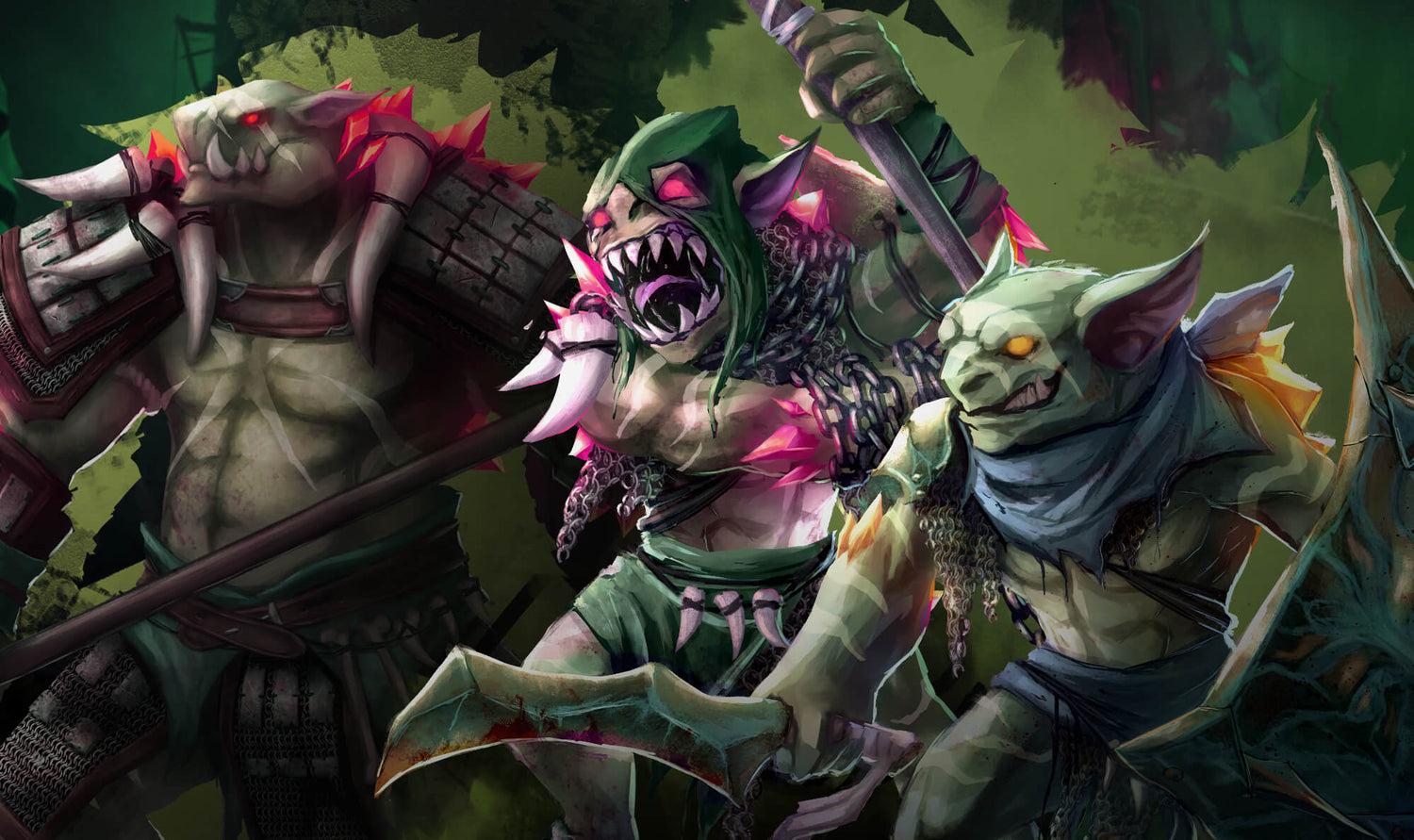FACTION
In the wild reaches of Calad, goblins have carved out dominions in the harshest and most secluded landscapes. Their lairs can be found nestled in forbidding foothills, shadowed swamplands, and deep within twisting cavern networks, tombs and abandoned mines—territories inhospitable to most, yet perfectly suited to their feral cunning. Goblins thrive in hunter-gatherer societies, split between two distinct roles.

GOBLIN FOLK

GOBLIN TYPES
Female hobgoblins bear a humanoid silhouette, often mirroring the proportions of humans, while male hobgoblins tend to be larger, broader, and physically more imposing than the average men. Their features are less distorted, their posture more upright, and their eyes betray a glimmer of evolved thought, though their
intellect still falls short of that possessed by civilized races. Nonetheless, they exhibit strategic cunning, capable of complex planning, ambush coordination, and the grim discipline of command. Goblins are often found in regions dense with ambient mana, and over generations, their physiology has adapted to this arcane saturation. Their bodies instinctively expel excess mana, which crystallizes along the upper back, elbows, and other protrusions. In male hobgoblins, this trait remains—a jagged, crystalline spine marking their unnatural resilience. However, in female hobgoblins, the adaptation has taken a different path: their crystalline growth has diminished, replaced instead by a rudimentary form of arcane channeling. As a result, female hobgoblins often become tribal casters, shaping primitive yet potent spells. In temperament, goblins remain true to their twisted instincts, blurring the line between mischief and malice. To them, violence is a form of humor, its cruelty softened only by the eyes of the perpetrator. They take perverse pleasure in poisoning wells, constructing hidden snares, and devising "jokes" that often end in maiming or death. Their sense of decor is equally deranged: livestock bones, bloody fetishes, and gruesome totems are strung through the trees or nailed to the walls of ruined dwellings—mocking echoes of the civilizations they defile.


